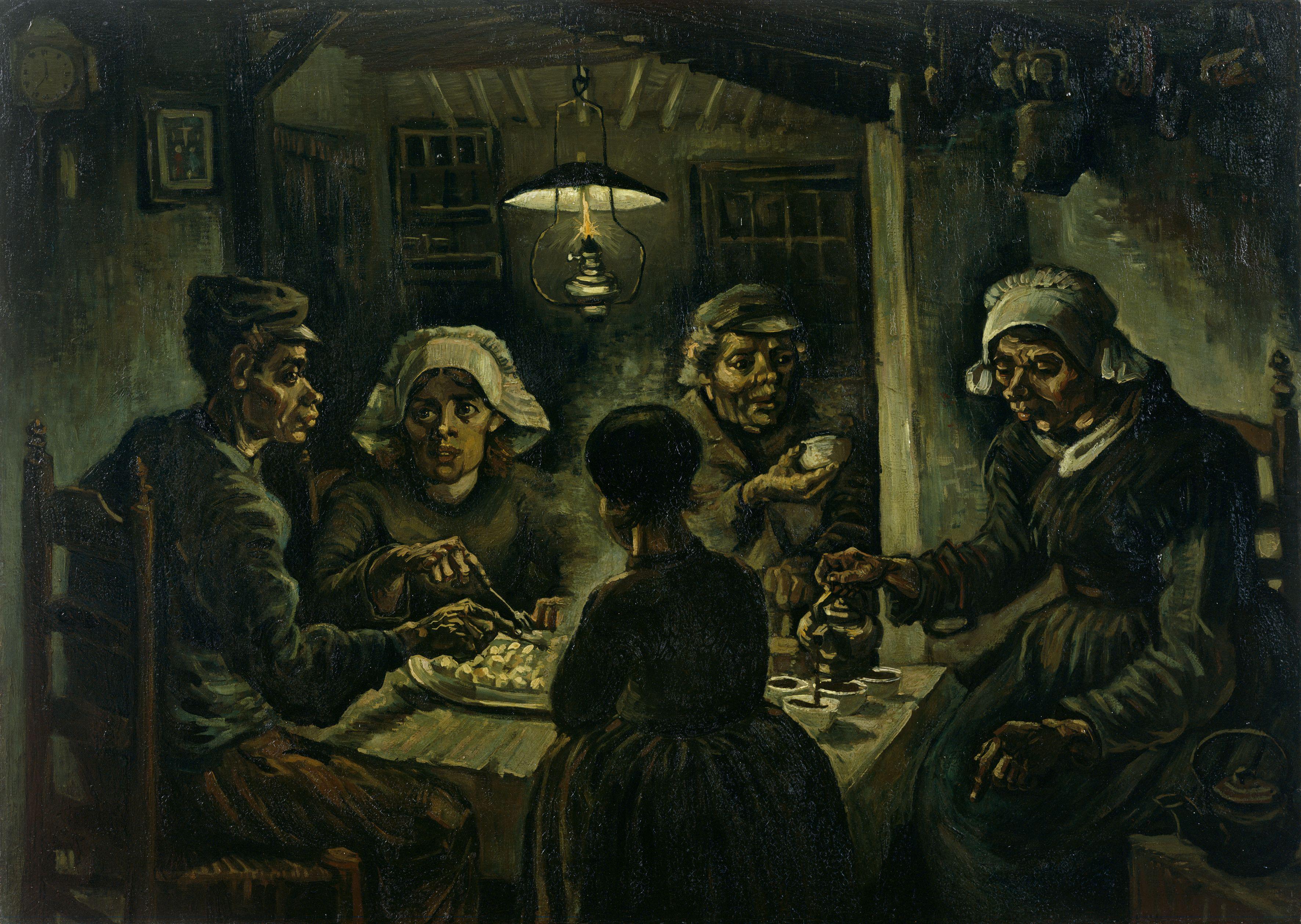The history of food is a delicious story of production, connection, influence, adaptation and culture. The first cookery book in the Netherlands, Een notable boexcken, dates from 1514. While many of its recipes stemmed from French, Italian or Arabic dishes, the Dutch gave their own interpretation to them. In almost all cases, austerity measures were taken, for the ‘Dutch method’ was more healthy, more tasteful and (above all) less expensive. In general, the Dutch cuisine is more straightforward than those of, for example, France and Spain. Her dishes are characterized by simplicity and sobriety, both in terms of ingredients and culinary traditions. “The Netherlands has an atrocious reputation for its cuisine and food: it is almost as bad as that of the British, except that at least the Dutch diet is considered ‘wholesome’.” (Wintle, 2006)
Concerning ingredients, the Dutch cuisine makes very little use of indigenous crops in their recipes. Most of the time, they came to the Netherlands during the following periods. First, there was the Roman era, which brought chicken and coriander to the Lower Countries of the Empire. Thereafter, influences with the Arabic world introduced oranges, aubergines, durum wheat, spinach and cauliflower. Finally, the discovery of the New World brought potatoes, green beans and tomatoes to the table.
Recipes that are usually considered ‘traditionally’ Dutch - hutspot and erwtensoep, for example - only appeared in the beginning of the nineteenth century. In fact, most of the traditional Dutch stamppotten with potatoes, vegetables and meat stem from the 1880s. Besides, as one might expect, they are by no means exclusively ‘Dutch’, for variations on potato hotchpotch have become popular all over Western Europe. But why are these late-nineteenth-century considered traditional in Dutch cuisine?
The Netherlands from 1800 to 1950
In the nineteenth century, the Netherlands witnessed a considerable rise in population. Birth rates had little to do with this: the Dutch were simply getting older and older; to such an extent, that the Netherlands became the most densely populated country amongst all developed countries in the world. The biggest steps were taken from the 1860s onwards, when water and food supply were being improved. The most famous example of this is the introduction of the potato as the staple of Dutch diet. Although the initial goal was to improve the people’s digestive systems and fight diseases, the potato soon became the epitome of Dutch cuisine.
 De aardappeleters by Vincent van Gogh (1885). © Van Gogh Museum, Amsterdam
(Vincent van Gogh Stichting).
De aardappeleters by Vincent van Gogh (1885). © Van Gogh Museum, Amsterdam
(Vincent van Gogh Stichting).
The Dutch and their potatoes
As some food historians acknowledge: “the Dutch have a special bond with the potato.” (Wintle 2006) The Spanish originally found the root vegetable in Peru and introduced it in Europe, where it reached the Netherlands around the 1550s. Its popularity grew due to the fast and easy growing process, combined with a high nutritional value. It appeared more often on the menu in the eighteenth century, and continued to rise in popularity in the nineteenth and twentieth centuries. We see this back in the appreciation of ‘traditional’ Dutch cuisine: stamppotten and potato dishes are still very popular and many swear by it. However, new generations continue to explore new cuisines and diversify the traditional menu more and more.
Current trends
Until this day, the ‘traditional’ Dutch cuisine is still characterized by sobriety. However, there is much influence from other food cultures around the world. Besides, the haute-cuisine in the Netherlands continues to develop itself in finding new ways of innovation via their extraordinary chefs. Although France and Spain continue to dominate haute-cuisine, the Dutch restaurant De Librije, located in Zwolle, accomplished a proud fifth spot in the Opinionated About Dining list, which lists the best European restaurants of 2017. Cooking will always be a balance between historical traditions and cultures, as well as innovative methods and new approaches. As an example, you can see here how Robert gives a contemporary interpretation to the historical recipe of Olijpodrigo.
References:
Meerman, Jacques. Kleine geschiedenis van de Nederlandse Keuken. Antwerpen: Veen Bosch & Keuning, 2015.
Wintle, Michael. “The Netherlands Economy.” Western Europe 1989. London (1988) 356-364.
Wintle, Michael. "Diet and modernization in the Netherlands during the nineteenth and early twentieth centuries." Food, Drink and Identity in Europe. Brill Rodopi (2006) 63-84.